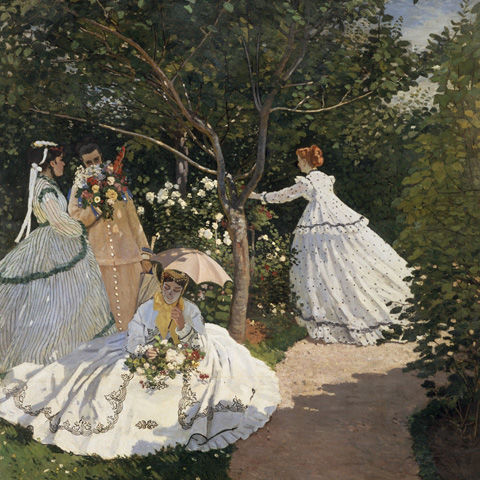Introduction
Impressionism is one of the most influential art movement which emerged in the late 19th century, it revolutionized the art world with its unique style and approach. It sought to capture fleeting moments, emphasizing the play of light, color, and movement. In this article, we will delve into the world of Impressionism, exploring its characteristics, origins, notable artists such as Claude Monet, and the significance of this groundbreaking art movement.
What is Impressionism?
Impressionism is an art movement characterized by its focus on capturing fleeting impressions of a scene or subject. Rather than striving for meticulous details, Impressionist artists aimed to convey the overall atmosphere and sensory experience of a moment in time. They sought to depict the changing effects of light, the vibrancy of color, and the transient nature of their subjects.
Characteristics of Impressionism
Impressionism art exhibits several key characteristics that set it apart:
1. Emphasis on Light and Color: Impressionist artists embraced the play of light and its effects on colors. They used short, broken brushstrokes and vibrant hues to capture the ever-changing qualities of natural light and its impact on the surrounding environment.
2. Loose Brushwork: Impressionist painters favored loose, visible brushwork, creating an illusion of movement and spontaneity. These quick and expressive brushstrokes added energy and vitality to their artworks.
3. Capturing Fleeting Moments: Impressionists aimed to capture the essence of a moment in time. They often painted en plein air (outdoors) to capture the shifting light and atmosphere, focusing on landscapes, urban scenes, and everyday life.
4. Depiction of Modern Life: Impressionists departed from the traditional subjects of historical events and mythological narratives, instead portraying scenes from everyday life, including cafes, gardens, and leisure activities. This emphasis on contemporary life was a significant departure from academic conventions.
Impressionism Time Period and Origins
Impressionism emerged in the late 19th century, challenging the established art norms of the time. The movement can be traced back to the 1860s in Paris, France, where a group of artists, including Claude Monet, Pierre-Auguste Renoir, Edgar Degas, and Camille Pissarro, began to explore new artistic approaches.
Claude Monet and Impressionism
Claude Monet, often regarded as the foremost Impressionist painter, played a pivotal role in the development and popularization of the movement. His iconic works, such as “Impression, Sunrise,” showcased the movement’s emphasis on capturing light, color, and atmospheric effects. Monet’s ability to convey the fleeting qualities of nature and his mastery of capturing different lighting conditions became hallmarks of Impressionist art.
Why is it called Impressionism?
The term “Impressionism” was coined from Monet’s painting “Impression, Sunrise.” It was originally used pejoratively by critics who felt that the artists’ focus on capturing fleeting impressions rather than precise details lacked artistic merit. However, the artists embraced the term, and it soon became associated with the movement.
The Main Focus of Impressionism Art
The main focus of Impressionism art was to evoke an immediate sensory experience for the viewer. It aimed to capture the ever-changing nature of light and atmosphere, infusing the artwork with a sense of vibrancy and spontaneity. Impressionists sought to convey the subjective and emotional response of the artist to the scene rather than providing a literal representation.
Significance of the Impressionism Art Movement
The Impressionism art movement brought about a significant shift in the art world. It challenged the rigid academic conventions of the time, paving the way for modern art movements that followed. Impressionism introduced a new way of seeing and experiencing the world, emphasizing individual perception, and capturing the essence of fleeting moments. Its influence can be seen in later art movements such as Post-Impressionism, Fauvism, and even early forms of abstraction.
Conclusion
Impressionism art remains a captivating and influential movement that transformed the way artists approached their subjects. With its emphasis on light, color, and capturing the essence of a moment, Impressionism provided a fresh perspective that resonated with viewers. Today, the works of renowned Impressionist artists like Claude Monet continue to inspire and captivate audiences, reminding us of the beauty found in the fleeting moments of life.
